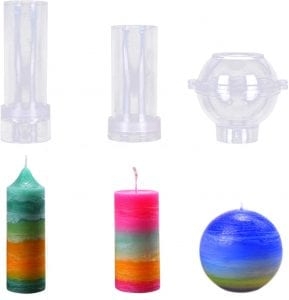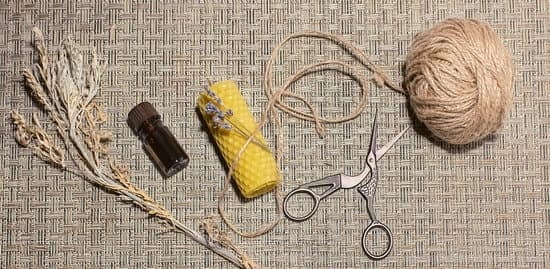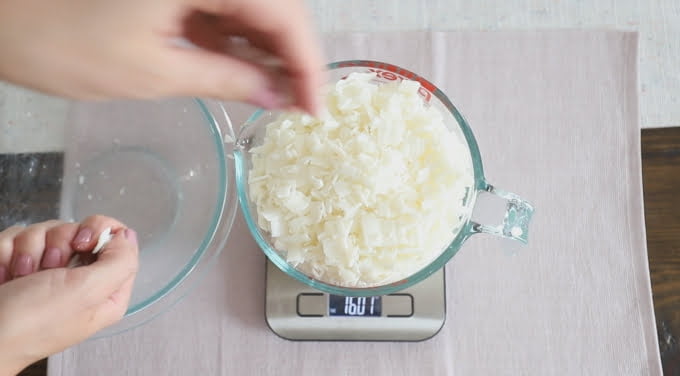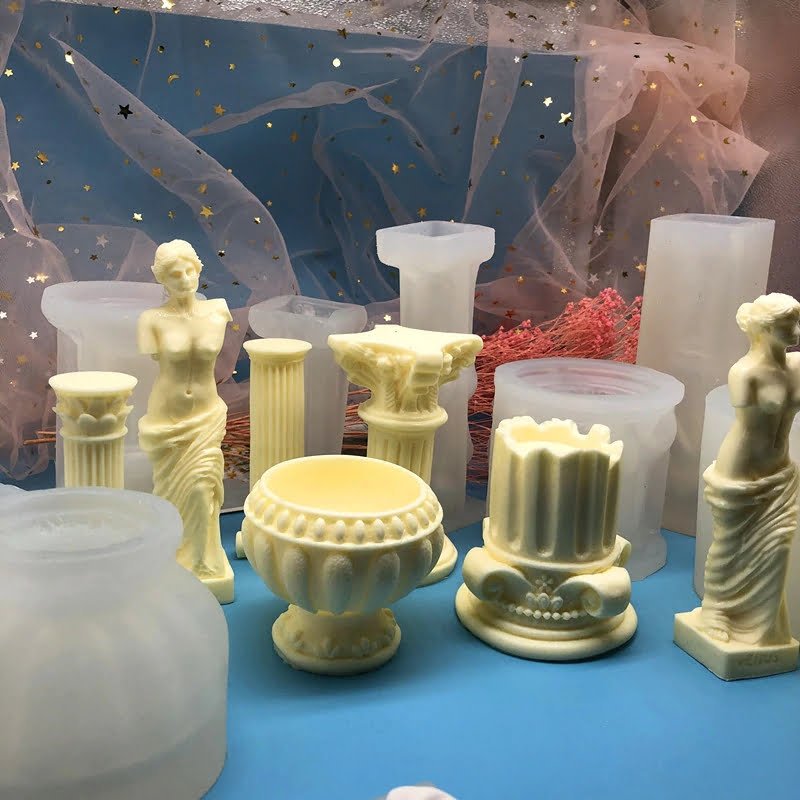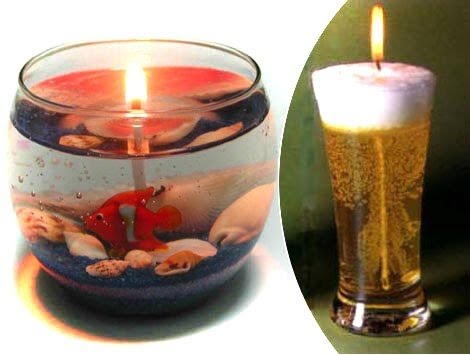Are you looking to elevate your candle making projects with a convenient and versatile ingredient? Look no further than wax chips for candle making.
Wax chips are small, easily meltable pieces of wax that are perfect for crafting your own candles. In this article, we will explore the benefits of using wax chips in candle making, the different types available, how to use them, tips for choosing the right wax chips, and even provide a DIY tutorial for creating your own beautiful candles.
When it comes to candle making, using wax chips can offer a range of advantages. From easy melting and measuring to a wide variety of options depending on your desired outcome, these small but mighty components can truly enhance your creative process. Whether you’re a seasoned candle maker or just starting out, incorporating wax chips into your projects can streamline the process and result in high-quality candles.
There are various types of wax chips available for candle making, each with its own unique qualities and benefits. From soy wax chips to paraffin wax chips, you have the freedom to choose the type that best suits your preferences and needs.
Additionally, some wax chips come in different colors and scents, allowing for even more customization in your candle creations. Stay tuned as we delve into the specific types of wax chips and how they can be utilized in crafting beautiful candles at home.
The Benefits of Using Wax Chips in Candle Making
Wax chips for candle making offer numerous benefits to crafters and hobbyists who enjoy creating their own candles. By using wax chips, individuals can customize the color, scent, and melting point of their candles while also enjoying the convenience of pre-measured portions.
Some benefits of using wax chips in candle making include:
- Convenience: Wax chips are pre-measured, saving time and effort in the candle-making process.
- Customization: With a variety of colors and scents available, wax chips allow for endless customization options.
- Precision: Wax chips provide consistent melting points, ensuring a more predictable and successful outcome.
- Flexibility: Crafters can easily experiment with different types of wax without committing to large quantities.
In addition to these benefits, using wax chips can also lead to less mess and waste compared to traditional block or pellet forms of wax. The smaller size of the chips makes them easier to handle and measure, resulting in a more efficient and enjoyable candle-making experience.
When considering the advantages of using wax chips for candle making projects, it becomes clear that they offer a convenient and versatile option for crafters looking to create personalized candles with ease. Whether you are an experienced candle maker or new to the craft, incorporating wax chips into your projects can enhance your creative process while allowing you to achieve professional-quality results at home.
Types of Wax Chips for Candle Making
There are several types of wax chips available for candle making, each with its own unique characteristics and benefits. When choosing the right wax chips for your candle making projects, it’s important to consider factors such as the type of candle you want to make, the fragrance load you plan to use, and the desired finished look of the candle.
Soy Wax Chips
Soy wax chips are a popular choice for candle making due to their clean-burning properties and natural origins. They are derived from soybean oil and are known for their excellent fragrance retention. Soy wax chips also have a smooth and creamy texture, making them easy to work with when making candles.
Paraffin Wax Chips
Paraffin wax chips are widely used in the candle industry due to their affordability and ability to hold a high fragrance load. These wax chips produce a shiny finish when used in candles and have a long burn time. However, it’s important to note that paraffin wax is derived from petroleum, which may be a drawback for some environmentally conscious crafters.
Beeswax Chips
Beeswax chips are all-natural and known for their sweet, honey-like aroma. They have a high melting point and produce candles with a beautiful natural color and subtle honey scent. Beeswax is also known for its air-purifying properties when burned, making it a great choice for those looking for a more natural option in candle making.
In summary, the type of wax chips you choose for your candle making projects will depend on your preferences regarding fragrance load, burn time, finish appearance, and environmental considerations. It’s essential to explore and experiment with different types of wax chips to find the perfect fit for your specific candle making needs using
How to Use Wax Chips in Candle Making
Wax chips are a popular choice for candle making due to their convenience and ease of use. Whether you are a beginner or an experienced candle maker, incorporating wax chips into your projects can help you achieve the perfect candles. In this section, we will discuss the steps on how to use wax chips in candle making.
Steps for Using Wax Chips in Candle Making
- Measure the Wax Chips: Determine how much wax you will need for your project and measure out the appropriate amount of wax chips.
- Melt the Wax Chips: Place the measured wax chips into a double boiler or a pouring pitcher, then heat them over low heat until fully melted. Stir occasionally to ensure even melting.
- Add Fragrance or Color: Once the wax chips are completely melted, you can add fragrance oils or candle dye if desired. Stir gently to evenly distribute the additives throughout the melted wax.
- Pour the Wax: Carefully pour the melted wax into your chosen candle container, making sure to leave some space at the top for any additional decorative elements or topping off with more wax.
- Insert Wick: Before the wax sets, insert a pre-tabbed wick into the center of the candle and secure it in place using a wick holder or by gently tying it to a pencil laid across the top of the container to keep it centered while cooling.
- Allow to Cool: Let the candle cool and set for several hours until completely hardened before trimming and lighting.
Tips for Using Wax Chips in Candle Making
- Use a thermometer to monitor the temperature of your melted wax when adding fragrance or color as different additives have specific temperature recommendations for optimal results.
- Experiment with different types of waxes and blends available as wax chips to find what works best for your preferred candle style and scent throw preferences.
By following these simple steps and tips, you can successfully incorporate wax chips into your candle making projects, creating beautifully scented candles that are perfect for any occasion.
Tips for Choosing the Right Wax Chips for Your Candle Making Projects
When it comes to choosing the right wax chips for your candle making projects, there are a few factors to consider that can make a big difference in the outcome of your candles. One important thing to keep in mind is the type of wax you want to use.
There are different types of wax chips available on the market, including soy wax, paraffin wax, and beeswax. Each type of wax has its own unique characteristics and qualities, so it’s important to choose the one that best suits your needs and preferences.
Another important factor to consider when choosing wax chips for candle making is the fragrance. Many wax chips come pre-scented with a variety of different fragrances, while others are unscented and can be customized with your choice of essential oils or fragrance oils.
The fragrance of your candles can have a big impact on the overall ambiance and mood they create, so it’s worth taking the time to choose a scent that you love and that will appeal to your intended audience.
It’s also important to consider the color of the wax chips you choose. Some wax chips come in a natural creamy white color, while others are dyed with various pigments to create vibrant and eye-catching hues. The color of your candles can add an extra dimension to their aesthetic appeal, so think about what kind of look you want to achieve when choosing the right color for your wax chips.
| Factors to Consider | Considerations |
|---|---|
| Type of Wax | Soy, Paraffin, Beeswax |
| Fragrance | Pre-scented or customizable with essential oils/fragrance oils |
| Color | Natural white or dyed with various pigments for different hues |
DIY Candle Making Tutorial Using Wax Chips
Are you interested in making your own candles using wax chips? You’ve come to the right place. In this section, we’ll provide you with a step-by-step DIY candle making tutorial using wax chips. Whether you’re a beginner or an experienced candle maker, using wax chips can simplify the process and enhance the quality of your homemade candles.
Gather Your Materials
Before you start making your candles, make sure you have all the necessary materials on hand. You’ll need wax chips, candle wicks, a heat-resistant container for melting the wax, a double boiler or wax melting pitcher, essential oils or fragrance oils for scent (optional), and any desired colorants. You may also want to use a thermometer to monitor the temperature of the melted wax.
Melting the Wax
The first step is to melt the wax chips. Place them in your heat-resistant container and set up a double boiler on the stove. Alternatively, you can use a wax melting pitcher specifically designed for candle making. Heat the wax slowly and gently until it reaches the recommended temperature specified by the manufacturer.
Adding Scent and Color
Once the wax is fully melted, you can add fragrance oils or essential oils to create scented candles. Be sure to follow recommended usage rates for optimal scent throw. If desired, add colorants to achieve your preferred hue. Stir gently until everything is well combined.
By following this easy DIY candle making tutorial using wax chips, you’ll be able to create beautiful and fragrant candles right in the comfort of your home. Experiment with different scents, colors, and shapes to customize your homemade candles according to your preferences.
Conclusion and Final Thoughts on Wax Chips for Candle Making
In conclusion, wax chips for candle making offer a convenient and efficient way for crafters to create beautiful and customized candles. The benefits of using wax chips in candle making are numerous, including ease of use, precise measurement, and a wide variety of options to choose from. Whether you’re a beginner or experienced candle maker, there are wax chips available to suit your specific project needs.
When considering which wax chips to use for your candle making projects, it’s important to understand the different types available. From soy wax chips to beeswax chips, each type offers unique characteristics that can impact the final outcome of your candles. By carefully selecting the right wax chips for your projects, you can ensure that your candles turn out just the way you envision them.
If you’re new to candle making or simply looking for a fun DIY project, using wax chips is a great way to get started. With the right materials and some helpful tips, you can enjoy creating your own custom candles from the comfort of your home.
Whether it’s making scented candles as gifts for loved ones or creating decorative pieces for your space, working with wax chips opens up a world of possibilities for crafting beautiful and unique candles.
Frequently Asked Questions
Which Wax Is Best for Candle Making?
The best wax for candle making depends on the type of candle you want to create. Soy wax is popular for its clean burn and strong scent throw, while paraffin wax is ideal for its ability to hold color and scent.
How Do You Melt Wax Chips for Candles?
To melt wax chips for candles, you can use a double boiler or a dedicated wax melting pitcher. Simply place the wax chips in the top of the double boiler or pitcher, heat it gently until melted, and then pour it into your candle molds.
How Many Dye Chips Per Pound of Wax?
The number of dye chips needed per pound of wax varies depending on the desired color intensity. As a general guide, 1 dye chip per pound of wax will produce a pale shade, while 4-5 dye chips per pound will result in a more vibrant color.

Welcome to my candle making blog! In this blog, I will be sharing my tips and tricks for making candles. I will also be sharing some of my favorite recipes.

